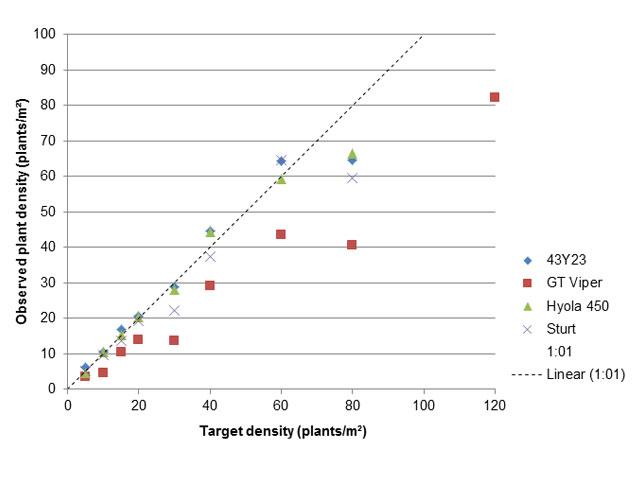Background
Canola is now being grown in low rainfall areas.
Primarily, growers choose open pollinated (OP) triazine tolerant (TT) varieties, however, breeding companies are favouring the development of hybrids in order to pay for breeding services.
Hybrids provide growers with more vigorous seedlings, comparatively better plant establishment and generally higher yields.
However growers have to purchase new seed of hybrid varieties every year in order to get these potential yield benefits.
Seed for hybrid canola is 25 times more expensive than the seed of open pollinated canola.
Inevitably if growers are forced into hybrids they will wish to minimise seed costs by sowing at low densities.
Trials in 2013 showed that hybrid canola had lower optimum densities than OP varieties and that Roundup ready (RR) canola had lower optimum densities than TT canola.
However, the kind finish of the 2013 growing season would have favoured lower densities so this work needs to be repeated in more normal season types.
Aim
To compare the plant density response of yield and oil content between hybrid and OP canola in TT and RR herbicide tolerance groups.
Trial details
| Crop / variety | Canola |
| Paddock rotation | 2012 - wheat, 2013 - wheat |
| Treatments |
|
| Replicates | Four |
| Sowing date | 1 May 2014 |
| Seeding rate | Various (from 0.3-7.9kg/ha depending on treatment) |
| Fertiliser (kg/ha) | Agstar Extra at 100kg/ha |
Mingenew results
Establishment has been close to target except for GT Viper.
The reason for this is that the GT Viper seed used had a lower germination (53%) than was assumed (98%).
Field establishment efficiencies estimated at 30 plants/m2 in this experiment were 71% and 76% for the two hybrids; 43Y23 and Hyola 450 and 60% and 46% for the two OP varieties; GT Viper and Sturt.
| Crop / variety | Canola |
|---|---|
| Paddock rotation | 2012 - wheat, 2013 - lupin |
| Treatments |
|
| Replicates | Four |
| Sowing date | 30 April 2014 |
| Seeding rate | Various (from 0.3 to 7.9kg/ha depending on treatment) |
| Fertiliser (kg/ha) | Agstar Extra at 100kg/ha |
Binnu results
Establishment has been close to target at target densities up to 60 plants/m2 except for GT Viper.
The reason for this is that the GT Viper seed used had a lower germination (53%) than was assumed (98%).
Acknowledgements
This trial (14CH24) is part of the DPIRD/GRDC cofunded project DAW00227 Tactical break crop agronomy in Western Australia.


